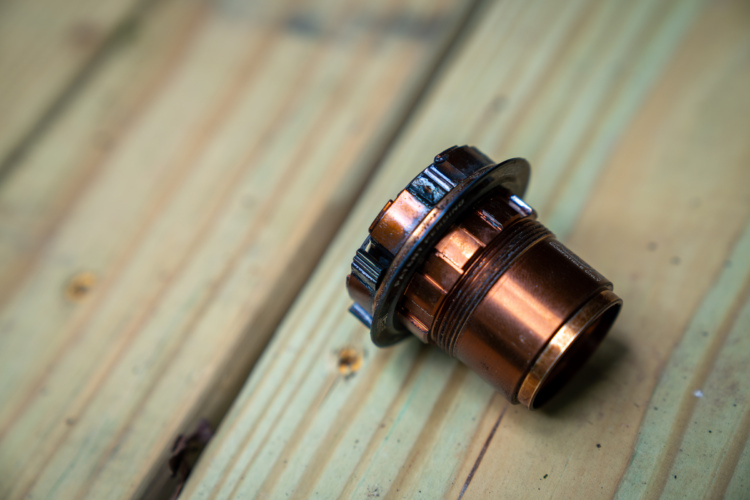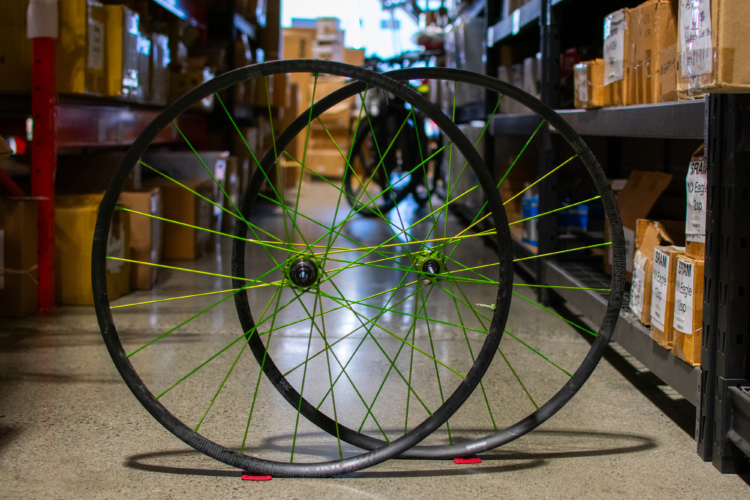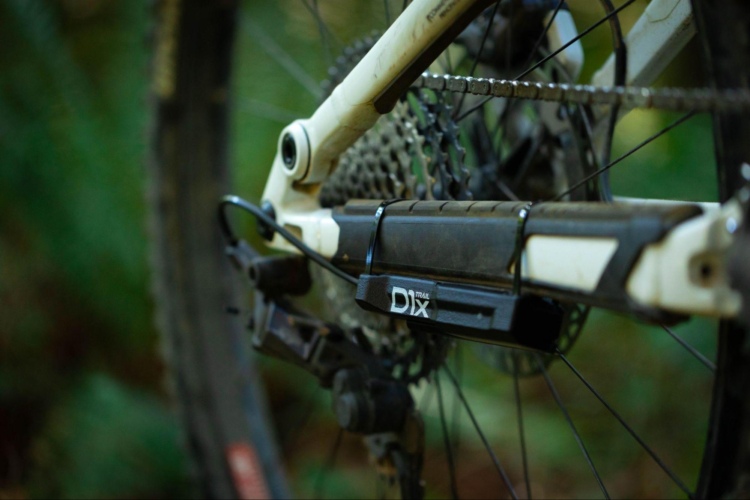
Earlier this month, Singletracks took a close look at the relationship between hub engagement and pedal feedback, and today there’s a new product on the market that seeks to solve the problem once and for all. The e*thirteen Sidekick hub uses a pawl-based design with an adjustable deadband that is claimed to eliminate “pedal kickback in nearly all situations.” The hub has been in development for at least seven years and has been tested by world-class athletes, including Aaron Gwin and Remy Metalier, over the past two seasons.
How does it work?
The Sidekick features three pawls that engage with a toothed ring. e*thirteen doesn’t say how many teeth there are, but by our count there are 46 teeth. A separate pawl pusher lifts the drive pawls into place so that they engage when pedaling, and it can retract the pawls for coasting. The video above shows the concept in action.
An external “deadband” adjuster allows the rider to select a 12°, 15°, or 18° angle before the pawl pusher lifts the pawls so that they can engage.

What is the advantage?
While the mechanics of how the system works are a bit complicated, the advantages are quite clear. With the drive pawls completely disengaged for coasting, the Sidekick system generates very little drag and is said to be nearly silent. Not only that, e*thirteen says the hub “eliminates drivetrain clatter and chain vibration when descending” and “allows for smoother and quieter shifting.”
The headline advantage, however, is the virtual elimination of pedal kickback when descending. As noted in our recent article about hub engagement, pedal kickback can happen in certain situations while descending on a full suspension bike as the distance between the rear axle and the bottom bracket changes and the bike’s chain forces the pedals to “kick.” In addition to the jarring nature of the effect, kickback limits suspension performance as well.
“Many riders have become so accustomed to pedal kickback occurring that they are not acutely aware of its impacts until it has been removed. While not every ride will produce pedal kickback, its effects are noticeable when it occurs, resulting in leg fatigue and compromised rider positioning.”
The chart above compares the amount of time a given shock spends in various portions of its travel ranges. With Sidekick, riders are said to spend up to 50% more time in the mid-stroke “sweet spot” between 11% and 70% of travel.

High-pivot designs seek to reduce pedal kickback as well, though e*thirteen notes their hub design works to eliminate kickback at its source. Many pro riders adopted the Ochain device to combat pedal kickback and have found it to be very effective. By comparison, the e*thirteen device is said to deliver similar performance at a lower weight and cost overall.
To be clear, the Sidekick is not designed to take the place of a high-engagement hub. Rather, the design is meant to deliver improved suspension performance and decreased drag compared to all hubs, whether high or low engagement.
While the e*thirteen Sidekick seems squarely aimed at DH mountain bikers, with a 7-speed mini HG option available, the brand says bikes with high anti-squat — i.e. good pedal efficiency — stand to benefit too. “The Sidekick hub seamlessly switches between reducing or eliminating pedal kickback and providing the designed amount of anti-squat, without the rider even knowing.”
Read through the nine (!) single-spaced pages of text below to learn more about the Sidekick hub, or click over to the e*thirteen website for a similarly long and detailed explanation.
The e*thirteen Sidekick rear hub is priced at $599.95 and will also be available as part of the brand’s new Grappler Sidekick Flux wheelset with carbon or aluminum rims.




















0 Comments